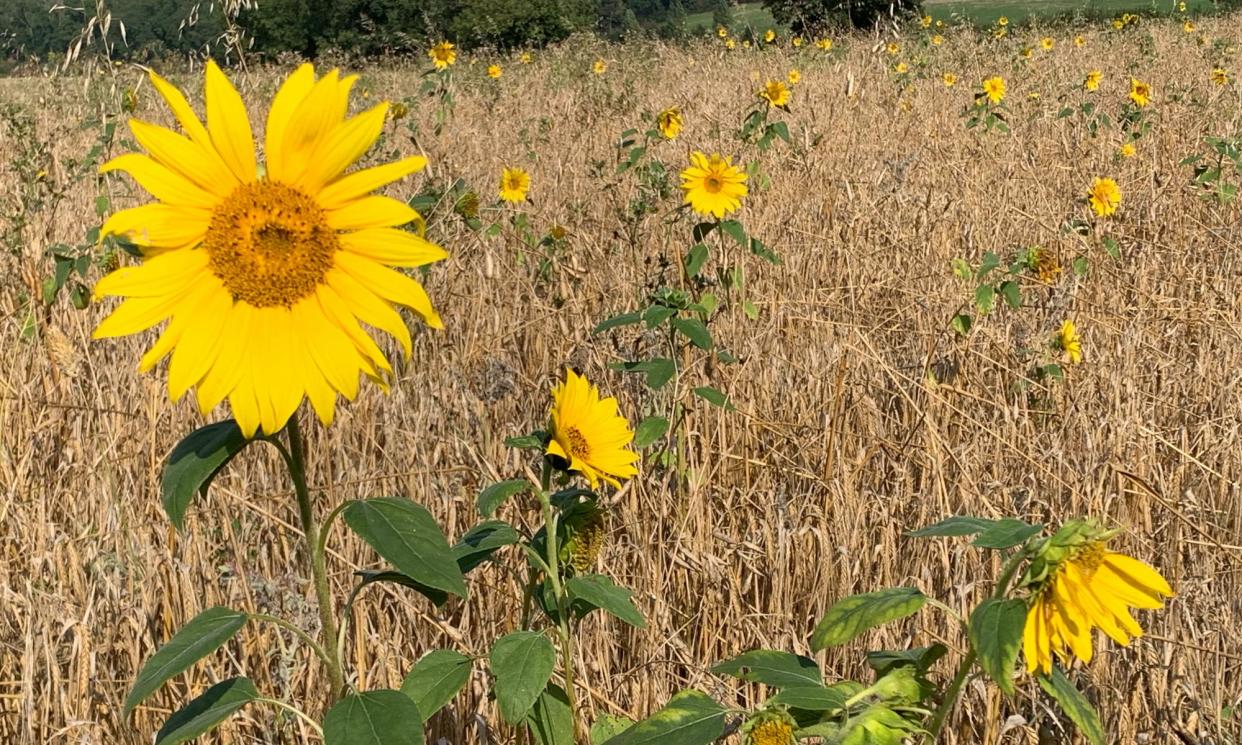Country diary: Field names bring to life tales of history and change

A juvenile gull, a lesser black-back, sits on the roof of the stable block, emitting a repetitive, plaintive call. It rings out around the entire yard like an alarm. Starlings gather on the telephone wires and the swallows are still here, just. Swifts are long gone, though.
A local artist has helped create a map of the farm, with illustrations that bring the boundaries to life. As I stride out, map in hand, the field names are rekindled, each telling a tale of history or change, of loss or progress.
I begin at Dirty Close, enjoying the pragmatism of the title. It’s the closest field to the yard and the land is very heavy clay, so the working horses and men always returned from their labour filthy. Over the lane, Night Meadow was where cows spent the evening after milking. But nearby Gun Field is so named not from shoots, but from the second world war. At night, decoy lights aimed to trick enemy planes that this was Norwich, drawing them close enough for the anti-aircraft guns to attack, protecting the city.
Yet that is just recent history compared with Temple Field. Here, the second largest Roman temple complex in Britain is found, with excavations having shown that it was at least two storeys high, with parts of it constructed earlier than the third century AD.
The temple is still there, after all that time, but the same cannot be said of the bird after which Woodcocks Wood is named. It has become a ghost of the farm’s natural history. The RSPB says that the breeding population has fallen in recent years, perhaps as conifer plantations have become too mature for woodcocks to find open enough breeding areas. It is a red-list species of conservation concern, yet still legal to shoot in the UK during open season.
We don’t know all the reasons behind the names. Broken Back might refer to an accident, or maybe that it was a brutal, back-breaking field to work on, thanks to the hill and the huge bank that span its width. Pi Field might just be my favourite: a farmer’s nod to mathematics, with its 3.14 acres. Today, it is swaying with glorious sunflowers, seeds packed into their heads with Fibonacci precision. And so, remapped and inspired by maths, we begin the farming year.
• Country diary is on Twitter/X at @gdncountrydiary
• Under the Changing Skies: The Best of the Guardian’s Country Diary, 2018-2024 (Guardian Faber) is published on 26 September; pre-order now at the guardianbookshop.com and get a 20% discount


